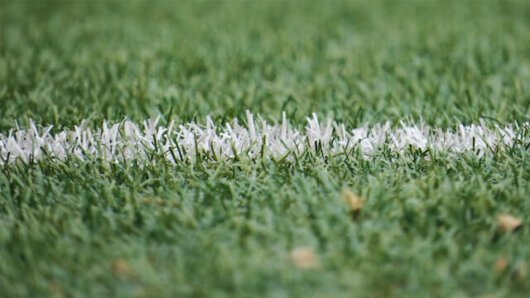An athlete is a person who participates in physical sports and exercises, often competing at various levels of skill, from amateur to professional. Athletes are characterized by their physical ability, dedication to training, and a strong commitment to their chosen discipline.
They engage in a wide variety of activities, including team sports like basketball and soccer, individual sports such as tennis and gymnastics, and endurance-based activities like running, cycling, and swimming. The term “athlete” is often associated with individuals who push their physical and mental limits to achieve excellence, whether for personal achievement or competitive success.
Athletes are not only defined by their physical abilities but also by their mental toughness. They require discipline, focus, and resilience to continuously train, improve, and compete.
Successful athletes often balance intensive physical training with strategies to maintain mental clarity, motivation, and emotional well-being.
Their routines frequently involve structured diets, specialized exercises, and recovery plans to ensure optimal performance. This dedication allows athletes to maintain peak physical condition, even under the demanding conditions of competitive events.
Athletes can come from all walks of life and vary widely in terms of age, gender, and the type of sport they pursue.
Children and young people often get their start in sports through school or community programs, learning the foundational skills of competition, teamwork, and physical fitness. Professional athletes, on the other hand, are often specialists in a particular sport, spending years honing their skills to compete at the highest levels, such as the Olympics or major sports leagues. Regardless of the level, athletes share a common passion for physical activity and self-improvement.
In today’s society, athletes are often seen as role models due to their dedication, perseverance, and ability to overcome challenges.
They inspire others to pursue fitness, health, and discipline in their own lives. Whether competing in local leagues or representing their country on the world stage, athletes serve as examples of what can be achieved through hard work, resilience, and a passion for excellence.
TO BE CONSIDERED AN ATHLETE, A PERSON WOULD TYPICALLY ENGAGE IN SOME FORM OF PHYSICAL SPORT, RANGING FROM AMATEUR TO PROFESSIONAL LEVELS.
Athletes can come from all age groups, from children to adults, and may compete casually, in school or community events, or in high-level professional competitions. The key aspect is participation in physical activity, training, and often competition.
Physical sports are activities that require physical exertion, skill, and coordination.
They involve using the body to achieve specific goals or outcomes, such as scoring points, reaching a finish line, or outperforming opponents. Physical sports can be divided into several categories based on the type of movement or effort they require.
Below are a few examples:
TEAM SPORTS:
These are sports where athletes work together to achieve a common goal. Examples include:
Football (soccer): Players run, kick, and maneuver the ball to score goals.
Basketball: Involves running, jumping, and shooting to score points.
Volleyball: Teams hit the ball back and forth over a net with the goal of grounding it in the opponent’s court.
INDIVIDUAL SPORTS:
These sports focus on individual performance, where an athlete competes against others or personal records.
Tennis: Players use rackets to hit a ball over a net, aiming to win points against an opponent.
Track and Field: Involves running, jumping, and throwing events such as sprints, long jump, and javelin.
Swimming: Athletes race in water, requiring stamina, speed, and technique.
Endurance Sports: These sports require athletes to sustain physical activity over long periods, often testing stamina and mental toughness.
Marathon Running: A long-distance race where participants must maintain a steady pace for 26.2 miles.
Cycling: Races or long-distance rides that challenge endurance, speed, and strategy.
Triathlon: Combines swimming, cycling, and running in one event, testing overall fitness and endurance.
COMBAT SPORTS:
These sports involve physical contact between competitors.
Boxing: Athletes fight using punches while following specific rules.
Martial Arts: Various forms such as judo, karate, and mixed martial arts (MMA) that involve strikes, grappling, or submissions.
Wrestling: A sport where competitors attempt to pin or outmaneuver their opponent through holds and throws.
EXTREME OR ADVENTURE SPORTS:
These are sports that often involve higher risks and require specialized skills.
Surfing: Riding waves on a surfboard requires balance and strength.
Rock Climbing: Athletes scale natural or artificial rock walls using their strength, endurance, and problem-solving skills.
Snowboarding: Athletes descend snow-covered slopes using a board, often performing jumps and tricks.
Racquet Sports: These sports involve hitting a ball or shuttlecock with a racquet or paddle.
Badminton: Players hit a shuttlecock back and forth across a net, aiming to score points by landing it in the opponent’s court.
Squash: A fast-paced game played in an enclosed court where players hit a ball off the walls to outmaneuver their opponent.
Physical sports are diverse and can range from high-contact team games to solo endurance challenges or skill-based activities.
What unites them is the need for physical movement, strategy, and often competitive spirit. These activities require athletes to develop both physical fitness and mental resilience, and they can be enjoyed at various levels of intensity and competition.
MANY PEOPLE BELIEVE THAT BEING AN ATHLETE CAN HELP INDIVIDUALS BECOME BETTER PEOPLE, BOTH IN TERMS OF PERSONAL GROWTH AND HOW THEY RELATE TO OTHERS. Participation in sports and athletic activities fosters various qualities that contribute to a person’s overall character development and well-being.
Here are some keyways being an athlete can positively influence a person:
DISCIPLINE AND COMMITMENT
Athletes often develop a strong sense of discipline and commitment through their training and dedication to their sport. Achieving success in sports requires consistent effort, long hours of practice, and perseverance in the face of challenges. This discipline translates into other areas of life, such as work, academics, and personal relationships, helping individuals become more organized, responsible, and focused on their goals.
RESILIENCE AND MENTAL TOUGHNESS
Competing in sports teaches athletes how to cope with setbacks and challenges. Injuries, losses, and failures are common in athletic careers, and athletes learn to recover and bounce back from these disappointments. This resilience can help individuals face adversity in their everyday lives, strengthening their ability to handle stress, overcome obstacles, and keep going when the going gets tough.
TEAMWORK AND COOPERATION
For athletes in team sports, working collaboratively with others is a core part of the experience. Athletes learn how to communicate effectively, trust their teammates, and contribute to a collective goal. These skills build a sense of camaraderie and teach individuals how to work well with others, a vital quality in social and professional environments. Athletes often become more empathetic and cooperative, understanding the importance of each person’s role in achieving success.
HEALTHY HABITS AND LIFESTYLE
Athletes are more aware of the importance of physical health and nutrition. Regular training fosters habits like exercising, eating well, staying hydrated, and getting enough rest. These habits contribute to long-term physical and mental well-being. By making health a priority, athletes are more likely to avoid unhealthy behaviors and maintain a balanced lifestyle.
LEADERSHIP AND CONFIDENCE
Athletes, especially those who achieve a high level of success, often develop leadership qualities. They may serve as captains or role models for their teams, encouraging and motivating others. This fosters self-confidence, as athletes gain recognition for their skills and contributions. Confidence gained through athletic achievements often extends to other areas of life, helping individuals take initiative, make decisions, and lead with a positive influence.
GOAL-SETTING AND ACHIEVEMENT
Athletes are accustomed to setting specific, measurable goals, whether it is improving their performance, winning a competition, or achieving personal bests. The process of setting and working toward goals helps develop a sense of purpose and direction. As athletes experience the satisfaction of reaching milestones, they are more likely to apply goal-setting techniques to other life areas, contributing to continuous personal and professional growth.
HUMILITY AND SPORTSMANSHIP
While sports can build confidence, they also teach humility and sportsmanship. Winning and losing with grace are important lessons learned through competition. Athletes learn to respect their opponents, value fair play, and understand that success is not always guaranteed. This mindset fosters a balanced, humble approach to life, where individuals value effort over outcome and are more respectful of others.
TIME MANAGEMENT
Balancing academics, work, or personal life with training schedules requires athletes to develop excellent time management skills. Athletes must learn to prioritize their commitments and efficiently manage their time to meet the demands of both their sport and other responsibilities. This skill becomes highly valuable in any aspect of life, helping individuals stay organized and productive.
In short, being an athlete can profoundly impact a person’s character, values, and mindset. The lessons learned through sports — discipline, teamwork, resilience, and a commitment to health and self-improvement — often shape individuals into well-rounded, responsible, and empowered people, helping them become better in all aspects of life.
MOST PEOPLE BECOME ATHLETES BY STARTING THEIR JOURNEY THROUGH ORGANIZED SPORTS PROGRAMS OR RECREATIONAL ACTIVITIES AT A YOUNG AGE, BUT THERE ARE SEVERAL PATHWAYS TO BECOMING AN ATHLETE. BELOW, WE’LL EXPLAIN HOW MOST PEOPLE START THEIR ATHLETIC JOURNEY AND EXPLORE OTHER WAYS PEOPLE CAN BECOME ATHLETES.
STARTING YOUNG IN ORGANIZED SPORTS
The most common way people become athletes is by participating in organized sports during childhood. Schools, local clubs, and community programs often offer sports leagues where children can join activities like soccer, basketball, gymnastics, or swimming. Through these programs, children develop their physical abilities, learn basic rules, and experience teamwork and competition. For many, this is the foundation that leads them to continue participating in sports throughout their lives, whether in high school, college, or even professionally.
SCHOOL AND COLLEGE SPORTS
Many people develop into athletes through participation in middle and high school sports teams, where they receive more structured training and competition. Schools often have a range of athletic programs, from track and field to football, which help young athletes specialize in specific sports. For those who excel, college sports can provide opportunities to further develop their skills and compete at higher levels. College athletes receive coaching, mentorship, and exposure to advanced competition, and some may go on to compete professionally or semi-professionally.
JOINING RECREATIONAL LEAGUES AS AN ADULT
Some people discover or develop their athletic skills later in life by joining adult recreational leagues or clubs. These leagues cater to various sports such as soccer, basketball, tennis, or volleyball and provide an opportunity for adults to engage in physical activity and competition. Recreational athletes might not have participated in sports during their youth, but through these leagues, they find enjoyment, challenge, and a path to fitness.
BECOMING AN ATHLETE THROUGH FITNESS AND ENDURANCE SPORTS
Another common pathway to becoming an athlete is through individual fitness pursuits like running, cycling, or swimming. People often take up activities like jogging, participating in local races, or joining gyms to improve their fitness. Over time, these individuals may become more serious about their training, setting personal goals for events like marathons, triathlons, or cycling competitions. Endurance sports have attracted many people who initially took up fitness as a hobby but found themselves becoming competitive athletes.
TRANSITIONING FROM NON-ATHLETIC BACKGROUNDS
Some individuals become athletes later in life, even if they do not have a history of sports participation. A person might get inspired to take up a new sport for fun, health, or social reasons. For example:
CrossFit and Functional Training: Many adults discover their athleticism through CrossFit or other functional fitness programs that focus on strength, endurance, and skill. These programs often feel accessible because they are scalable to different fitness levels, and people can gradually develop into strong, competitive athletes.
Martial Arts or Combat Sports: Many people take up martial arts like Brazilian Jiu-Jitsu, Muay Thai, or boxing to stay fit or learn self-defense. Over time, some develop the skills and dedication to compete in tournaments or competitions.
Extreme Sports or Adventure Activities: People who seek excitement and thrill may become athletes by engaging in adventure sports like rock climbing, snowboarding, surfing, or mountain biking. These activities often attract individuals who prefer unconventional or solo pursuits and develop their athleticism through skill and experience over time.
PARTICIPATING IN ADAPTIVE SPORTS
Some individuals with disabilities or physical challenges become athletes through adaptive sports programs. These programs are designed to make sports accessible to everyone, regardless of physical ability. Athletes may participate in wheelchair basketball, Paralympic events, or other specialized sports that allow them to compete and train using adaptive equipment. Many of these athletes achieve great success and inspire others by overcoming physical challenges and competing at a high level.
MILITARY AND PHYSICAL PROFESSIONS
People in physically demanding professions, such as the military, law enforcement, or firefighting, often develop athletic abilities through job training. The physical fitness required for these roles — running, lifting, endurance, and agility — helps individuals become strong and conditioned like athletes. Some may even go on to compete in sports like obstacle course racing (e.g., Spartan Races or Tough Mudder) or join amateur sports teams.
SELF-TAUGHT AND SOLO ATHLETES
Some individuals teach themselves sports or athletic activities independently, without formal training or organized programs. These athletes might take up solo activities such as skateboarding, parkour, or surfing, where practice and personal drive help them develop their skills. They might begin by watching tutorials, studying the sport, and practicing on their own, gradually becoming competitive or accomplished in their chosen activity.
TURNING HOBBIES INTO COMPETITIVE PURSUITS
Sometimes people turn a fitness hobby or casual sport into something more serious. A person who enjoys hiking may decide to take on extreme challenges like ultra-distance trail running or mountaineering. Someone who swims recreationally might eventually join a master’s swim team or compete in open-water races. The shift from casual participation to competitive athleticism can occur when someone becomes passionate about improving and testing their abilities in a structured way.
There are many ways people can become athletes, from starting young in organized sports to discovering their athleticism as adults through fitness, recreational leagues, or extreme sports. Becoming an athlete can be a natural progression from childhood play, a new challenge taken on later in life, or even the result of a professional or lifestyle change. Regardless of the path, the key factors are consistent practice, physical effort, and a desire to improve and compete.
IN BETWEEN COMPETITIONS, ATHLETES ARE CONSTANTLY WORKING OUT, EXERCISING, AND HONING THEIR SKILLS TO IMPROVE IN THEIR SPORT.
This period, often referred to as training or practice, is essential for an athlete’s growth and success. Here’s how athletes typically prepare and maintain their peak performance between competitions:
PHYSICAL CONDITIONING AND STRENGTH TRAINING
Athletes spend a significant amount of time working on their overall physical fitness. This involves:
Strength training: Using weights, resistance bands, or bodyweight exercises to build muscle, increase power, and improve endurance.
Cardiovascular conditioning: Activities like running, swimming, cycling, or other aerobic exercises to improve stamina and lung capacity.
Flexibility and mobility exercises: Stretching routines, yoga, or mobility work to maintain or increase flexibility, which helps prevent injuries and improves performance.
Recovery sessions: Incorporating rest days, massages, ice baths, and foam rolling to help the muscles recover and reduce the risk of injury.
SKILL DEVELOPMENT
Athletes continuously practice the specific skills required in their sport. These sessions are focused on refining technique, improving precision, and developing muscle memory. For example:
Soccer players work on ball handling, passing accuracy, shooting, and footwork drills.
Basketball players practice shooting, dribbling, defensive maneuvers, and play strategies.
Swimmers work on perfecting stroke technique, flip turns, and starts to reduce their race times.
Skill development is crucial for athletes to stay competitive, as it allows them to maintain and enhance their technical abilities.
STRATEGY AND GAME PLANNING
Many sports involve strategic thinking and tactical planning, so athletes often work with coaches to study their opponents, develop game plans, and improve their decision-making during competition. This includes:
Reviewing past performances: Athletes analyze their previous games or matches, identifying areas where they can improve.
Watching film of opponents: Studying the tactics, strengths, and weaknesses of upcoming competitors to create a strategy.
Simulating game scenarios: Athletes may practice specific plays, tactics, or strategies they expect to use in their next competition.
MENTAL PREPARATION
Success in sports is not just about physical fitness — mental toughness and focus are equally important. Athletes often engage in mental preparation between competitions through:
Visualization techniques: Imagining themselves successfully performing during competition, which can help boost confidence and reduce anxiety.
Mindfulness and relaxation: Meditation, breathing exercises, or other mindfulness practices to stay calm under pressure and focus on their goals.
Goal setting: Setting short-term and long-term goals to stay motivated and track their progress.
DIET AND NUTRITION
Proper nutrition is key for recovery and peak performance, so athletes focus on maintaining a healthy diet that supports their energy needs. This often includes:
High-protein meals to aid muscle recovery and growth.
Carbohydrates to provide energy for intense training sessions.
Hydration to prevent fatigue and enhance endurance.
Supplements to ensure their body gets enough vitamins, minerals, and other nutrients essential for optimal performance.
INJURY PREVENTION AND REHABILITATION
Preventing injuries is a major focus for athletes, as an injury could keep them out of competition. In addition to strengthening their bodies, athletes work on:
Injury prevention exercises: Targeting specific areas of the body prone to injury, such as the knees, ankles, and shoulders, through stabilization and balance work.
Rehabilitation: If an athlete does get injured, they focus on physical therapy and rehab exercises to recover and regain full strength before returning to full competition.
CROSS-TRAINING
Many athletes engage in cross-training — participating in activities or sports outside their primary one — to improve overall fitness and prevent burnout. For example:
A runner might swim or bike to build endurance without the impact of running on their joints.
A basketball player might take yoga classes to improve flexibility and balance.
In between competitions, athletes are constantly working to improve themselves physically, mentally, and strategically. This intense dedication to training and development is what allows them to continue growing, perform at their best, and stay competitive in their sport. Regular workouts, skill practice, and recovery are all essential parts of an athlete’s routine, making them better prepared for the next competition.
SOME PEOPLE JUST SEEM TO HAVE THAT “ATHLETIC LOOK,” AND WHEN YOU GET TO KNOW THEM, IT OFTEN TURNS OUT THEY ARE INVOLVED IN SPORTS OR PHYSICAL ACTIVITIES IN SOME CAPACITY. THIS CAN HAPPEN FOR A FEW REASONS:
PHYSICAL CHARACTERISTICS
Athletes often develop distinctive physical traits due to their training and active lifestyle. These characteristics might make them stand out, even to people who do not know them well:
Lean muscle mass: Many athletes have a well-defined physique with visible muscle tone, a result of strength training and conditioning.
Posture and body alignment: Regular physical activity, especially in sports that require good posture (like gymnastics or swimming), helps athletes maintain an upright and confident stance.
Agility and movement: Athletes tend to move with fluidity, balance, and coordination, even during everyday activities. This ease of movement is noticeable and suggests an athletic background.
CONFIDENCE AND PRESENCE
Athletes, especially those involved in competitive sports, often carry themselves with a sense of confidence. Their training teaches them discipline, resilience, and mental toughness, which can translate into a strong personal presence. People might unconsciously notice this self-assurance and associate it with athleticism.
HEALTH AND FITNESS
Being in great physical shape is another reason some people “look” like athletes. Regular exercise and sports participation often result in a healthy body composition, glowing skin, and good energy levels. People who look strong, fit, or energetic naturally give off athletic vibes, even when they are not actively engaging in their sport.
LIFESTYLE HABITS
Athletes are usually mindful of their lifestyle choices, which can affect their appearance. For example:
Healthy eating habits: Athletes tend to eat a balanced diet to fuel their performance, often leading to a lean, healthy body.
Rest and recovery: Prioritizing rest and sleep helps athletes maintain a fresh, energetic look.
Hydration: Staying hydrated keeps the skin healthy, making athletes appear more vibrant.
CLOTHING AND STYLE
People who are involved in sports often wear athletic or casual clothing that highlights their fitness. Whether it is active wear, sports shoes, or team gear, this can signal their involvement in sports. Athletes often wear comfortable, functional clothing even outside of training, which adds to the perception that they are physically active.
BODY LANGUAGE AND DEMEANOR
Years of physical training give athletes a certain body language, such as being more coordinated, balanced, or physically aware of their surroundings. This unconscious body control can make someone appear athletic even if they are just walking or standing. Athletes also tend to be more focused, disciplined, and competitive in various aspects of life, which can be visible in their actions and demeanor.
The “athletic look” is often a combination of physical traits, lifestyle habits, and demeanor that reflect a person’s involvement in physical activities.
It is common to meet someone who seems to have that athletic energy, only to discover they are indeed an athlete in some capacity — whether they play sports competitively, train regularly, or live an active lifestyle. Their dedication to fitness and performance can shape both their appearance and overall presence, making it easy to recognize them as athletes.
BECOMING AN ATHLETE, REGARDLESS OF AGE, STARTS WITH BUILDING A FOUNDATION OF FITNESS, DISCIPLINE, AND THE RIGHT MINDSET. HERE ARE SOME FIRST STEPS FOR ALL AGE GROUPS, TAILORED TO DIFFERENT STAGES OF LIFE, TO HELP YOU GET STARTED ON YOUR ATHLETIC JOURNEY:
CHILDREN (AGES 5-12)
For children, the focus should be on fun and exploration. Encouraging a love for movement is key to developing an athletic mindset.
Try different sports and activities: Encourage children to explore a variety of sports, such as soccer, swimming, gymnastics, or basketball. This helps them discover what they enjoy while building different skills like coordination, agility, and endurance.
Play regularly: Outdoor play, such as running, jumping, or biking, helps build general physical fitness and motor skills.
Focus on basic movements: Teach children foundational movements like running, jumping, throwing, and catching to build body awareness and confidence.
Make it fun: Keep the focus on enjoyment, not competition. This way, children will want to stay active and look forward to sports.
TEENS (AGES 13-18)
Teenagers can begin to specialize in a particular sport or stay more active in general, focusing on developing skills and improving fitness.
Join a sports team or club: High school teams, community sports leagues, or recreational clubs are great options. Being part of a team fosters discipline, teamwork, and regular practice.
Set goals and improve skills: Work on developing sport-specific skills, whether it is improving speed for track, accuracy for basketball, or technique for swimming.
Build strength and endurance: Incorporate strength training (with proper guidance) and conditioning exercises to improve overall athleticism. Activities like running, weightlifting, or body weight exercises can help build a solid foundation.
Focus on nutrition and rest: Learning good nutrition habits and the importance of sleep will support physical growth and athletic performance.
YOUNG ADULTS (AGES 19-30)
Young adults may want to take their athletic pursuits to the next level, either by competing more seriously or developing a high level of fitness.
Choose a sport and commit: If you have not already, decide which sport or physical activity you want to focus on. This could be team sports, individual sports like running, triathlons, or even recreational activities like rock climbing or surfing.
Create a structured training plan: Work with a coach or create your own plan that includes strength training, skill development, and endurance work. This is crucial for improving performance and staying injury-free.
Cross-train: Incorporate different activities, such as yoga, swimming, or cycling, to enhance overall fitness and prevent burnout.
Focus on recovery: Rest days, stretching, and recovery strategies are important. Proper recovery helps prevent injuries and ensures consistent progress.
ADULTS (AGES 31-50)
For adults, becoming an athlete often means balancing fitness goals with other responsibilities. The focus may shift to long-term health and wellness, but athletic performance is still achievable.
Start gradually: If you are new to a sport or coming back after a break, ease into training with a mix of cardio, strength, and flexibility exercises.
Find a sport or activity you enjoy: Whether it is joining a recreational soccer league, taking up tennis, or training for a marathon, finding a sport you love will help you stay consistent.
Make fitness part of your routine: Carve out time for workouts and practice sessions. Consistency is key, so build your schedule around exercise.
Work with professionals: Consider working with a coach or personal trainer to improve technique and avoid injuries, especially if you are trying something new.
Prioritize recovery and injury prevention: Warm-ups, stretching, and strength training are essential to keep your body resilient and healthy as you push your limits.
OLDER ADULTS (AGES 50+)
For older adults, athleticism can still be pursued, with a focus on maintaining health, mobility, and strength.
Choose low-impact sports: Activities like swimming, walking, cycling, or yoga are great for maintaining cardiovascular fitness, flexibility, and strength without putting too much strain on joints.
Start slowly and build up: If you are starting later in life, it is important to begin with low-intensity exercises and gradually increase as your fitness improves.
Work on mobility and flexibility: Regular stretching, yoga, or Pilates can improve flexibility and help prevent stiffness or injuries, which are more common with age.
Incorporate strength training: Strength training is essential at any age, but especially as you get older. Light weightlifting or body weight exercises can help maintain muscle mass and bone density.
Listen to your body: Pay close attention to any signs of discomfort or strain. It is important to avoid pushing too hard, as recovery times may be longer. Focus on consistency rather than intensity.
GENERAL TIPS FOR ALL AGES
Set realistic goals: Whether it is running your first 5K, joining a recreational sports league, or simply becoming more active, setting clear and achievable goals will keep you motivated.
Stay consistent: Regular exercise, even if it is only a few times a week, is key to becoming and remaining athletic. Find a routine that works with your schedule and stick to it.
Embrace the process: Developing as an athlete takes time. Enjoy the journey, celebrate small victories, and do not be discouraged by setbacks.
By following these steps, people of all ages can begin their journey toward becoming an athlete, whether for fun, fitness, or competition.
BECOMING AN ATHLETE CAN TRANSFORM YOU INTO A BETTER PERSON BY CULTIVATING DISCIPLINE, PERSEVERANCE, AND SELF-IMPROVEMENT.
The commitment to training, honing skills, and pushing your body and mind past their limits teaches valuable life lessons that go beyond sports.
Athletes learn the importance of setting goals and working tirelessly to achieve them, which can translate to success in other areas of life like work, relationships, and personal growth. The resilience built through overcoming physical and mental challenges in sports can foster a stronger sense of determination and the ability to face adversity head-on.
Moreover, athletics promotes values such as teamwork, humility, and respect for others. In both individual and team sports, athletes must learn to cooperate, support their peers, and accept constructive feedback.
This builds a strong sense of community and empathy, helping you relate better to others and work collaboratively. Whether it is learning to win graciously or handle defeat with grace, becoming an athlete nurtures emotional intelligence, mental toughness, and the ability to stay focused and composed in challenging situations. These traits help foster a more well-rounded, confident, and resilient person both in and out of sports.
TO FIND MORE DETAILED INFORMATION ABOUT WHY BECOMING AN ATHLETE CAN MAKE YOU A BETTER PERSON AND HOW TO START YOUR ATHLETIC JOURNEY, YOU CAN EXPLORE A VARIETY OF SOURCES THAT COVER BOTH THE PHYSICAL AND MENTAL BENEFITS OF SPORTS, AS WELL AS THE PRACTICAL STEPS FOR BECOMING AN ATHLETE. HERE ARE SOME GOOD PLACES TO START:
1. Books on Sports Psychology and Personal Growth:
- Books like “Mindset: The New Psychology of Success” by Carol S. Dweck and “The Champion’s Mind” by Jim Afremow explore how athletic disciplines improve mental toughness, character, and personal development.
- Autobiographies of athletes (e.g., Serena Williams, Michael Jordan) often reveal personal stories of how sports changed their lives, offering both inspiration and practical insights.
2. Online Articles and Blogs:
- Websites like Psychology Today or Mindbodygreen regularly publish articles on how sports and physical activity impact personal growth, mental health, and self-esteem.
- Blogs by athletes, coaches, and fitness experts often share personal experiences and advice on starting your athletic journey, such as Breaking Muscle or Active.com.
3. Fitness and Sports Organizations:
- Major sports organizations like the U.S. Olympic Committee or National Youth Sports provide information on how athletics positively impacts character development.
- Look for community or local sports leagues that often have resources to help beginners learn about sports and fitness.
4. Podcasts and Videos:
- Podcasts like The Tim Ferriss Show and The Mindset Mentor feature interviews with top athletes and experts discussing the mental and physical benefits of being an athlete.
- YouTube channels focused on fitness, sports psychology, or coaching (e.g., The Athletic Mindset) can offer free educational content.
5. Local Sports Clubs and Gyms:
- Joining local sports clubs or fitness classes can give you hands-on experience, mentorship, and information on becoming an athlete at any age. Coaches or trainers in these environments can offer personalized guidance.
These resources can provide inspiration, guidance, and practical tips on how sports can enhance personal development and how to start your own athletic journey.
If you liked this Share It!
Unleash your BOHOtude – visit BOHOtude Apparel for a selection of free-spirited apparel.





















